Club and party drugs are often assumed to be safe, but the truth is they can be just as dangerous, addictive and fatal as any other drug. Ecstasy has long been a popular club drug for the euphoric high and the sense of love and belonging that it gives the user. Ecstasy has also caused a number of club-goers to get sick, become drug addicts and even to die. K
now the truth about this party drug before you make a choice to try it. Whether it’s called ecstasy, Molly or MDMA, this drug is dangerous.
Effects Of Ecstasy
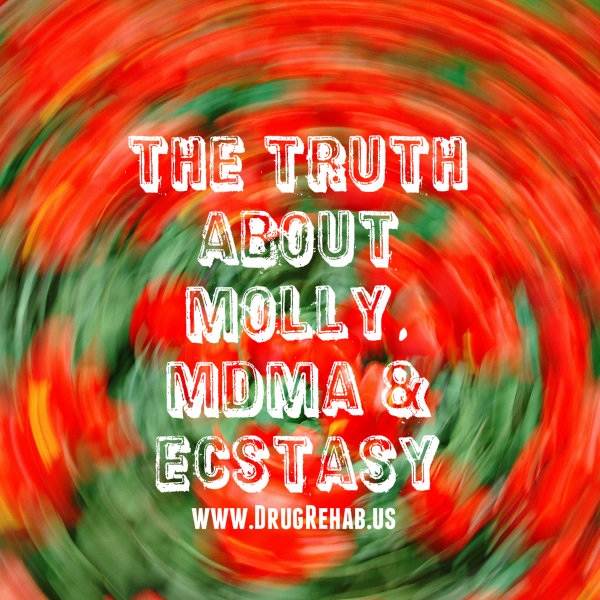 Ecstasy is popular as a party drug because of how it affects mood. Users of the drug report feeling a strong surge of euphoria and a sense of love and affection for other people. This combination makes it desirable at raves, clubs and parties. Ecstasy is able to alter mood because it changes levels of chemicals in the brain. These are dopamine, serotonin and norepinephrine and they are involved in the regulation of mood.
Ecstasy is popular as a party drug because of how it affects mood. Users of the drug report feeling a strong surge of euphoria and a sense of love and affection for other people. This combination makes it desirable at raves, clubs and parties. Ecstasy is able to alter mood because it changes levels of chemicals in the brain. These are dopamine, serotonin and norepinephrine and they are involved in the regulation of mood.
While changing these chemicals in your brain may make you feel happy and loving, the effects can also be negative. Many people experience negative mood changes with ecstasy, including aggression, paranoia, depression and anger. You may also experience sudden swings between feelings of euphoria and happiness and the more negative emotions and moods.
Ecstasy’s Dangerous Side Effects
In addition to the mood swings caused by ecstasy, there are some frightening side effects you can experience when using this drug. Side effects related to mood, including irritability, depression and anxiety, can last for a week or more after you use the drug. Physical effects are also likely and include extreme thirst, dehydration, and decreased libido, lack of appetite, restlessness, trouble sleeping and nausea.
Although not as addictive as some other drugs, ecstasy use can lead to addiction. If you become addicted to this supposedly harmless party drug, you risk being always in recovery for the rest of your life. And while drug and alcohol treatment success is possible, you can never fully escape the chronic illness of addiction.
The Lie About Molly And MDMA
For MDMA and Molly, drug abuse may seem perfectly safe. Clever drug dealers try to sell these products by claiming they are different than ecstasy. They claim that Molly is pure MDMA and that ecstasy is MDMA with dangerous contaminants. The truth is that the three drugs are the same and that you can never know if you are getting a pure drug (which is still very dangerous) or one that has been contaminated with more dangerous substances. No illegal drug is safe, ever.
If you have been tempted to try a party drug, whether it was MDMA, Molly, Ecstasy or any other substance, you should understand the risks. When you learn the truth about these harmful party drugs, you will feel empowered to say no the next time someone offers you a “safe” party high.
What Is The Deadly New Designer Drug: “Smiles”? – Find Out More Now!
There is something about the name “synthetic marijuana” that sounds safe. If traditional marijuana is potentially dangerous with risk for abuse, not to mention illegal, certainly the synthetic should be the healthy or at least harmless alternative, right? Not so fast. Read on to educate yourself about synthetic marijuana side effects and dangers.
What Is Synthetic Marijuana?
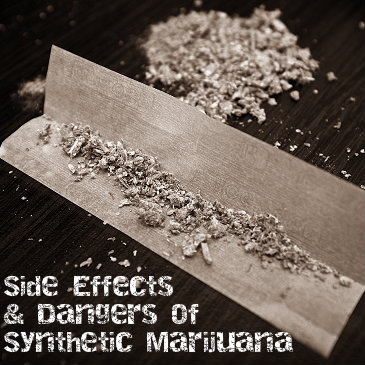 Synthetic marijuana is one substance from a family of what are known as “designer drugs.” Instead of marijuana in its natural plant form, this is a lab-created product intended to reproduce the high associated with marijuana. By creating a synthetic form of marijuana, producers, dealers and users believed they had landed on a product that would escape government sanction as well as urinalysis.
Synthetic marijuana is one substance from a family of what are known as “designer drugs.” Instead of marijuana in its natural plant form, this is a lab-created product intended to reproduce the high associated with marijuana. By creating a synthetic form of marijuana, producers, dealers and users believed they had landed on a product that would escape government sanction as well as urinalysis.
Known as K2 and spice, synthetic marijuana contains natural herbs that have been sprayed with a cannabinoid substance. While the pot-like high that the drug produces is due to the effect on the body of the same kinds of chemicals found in natural THC, it is not the same. And it is certainly not safer.
Side Effects And Dangers Of Synthetic Marijuana
The effects of synthetic marijuana will, to some degree, mimic traditional marijuana, but with some unique and often unintended consequences. For reasons not completely understood, the effect of smoking marijuana in its natural leaf form is distinct from smoking herbs sprayed with the chemicals contained within marijuana. This has led producers, users and scientists to conclude that there is more to the high and effect of traditional marijuana than the cannibinoids present in THC.
There are several synthetic marijuana dangers that users and potential users are often unaware of. Many individuals will use the drug expecting the results they are accustomed to with traditional marijuana. But with synthetic marijuana, the high is often more potent and completely unpredictable.
The side effects and dangers of synthetic marijuana that many do not anticipate, and that are rarely associated with the use of traditional marijuana, may include:
- various forms of psychosis
- hypertension
- seizures
- convulsions
- heart attack
- stroke
- blindness
- death
even in users who are young and in otherwise good health.
Synthetic weed also carries risk because of the mystery that surrounds its composition. The blend is not proprietary and each blend that a user obtains may contain any mix of unknown chemicals in unknown quantities, producing vastly different results from one high to the next. It is also especially difficult for medical professionals to treat overdoses and adverse effects given that the chemicals contained within the mixture the patient has taken may be unknown and unpredictable.
Synthetic marijuana is not a safe product and its use carries great risk. If you or someone you know struggles with addiction to synthetic marijuana or you are concerned about your use, do not delay in seeking help. Synthetic marijuana is not a harmless, legal substitute for an illegal drug; it carries dangers and side effects that may be far more severe than the drug it was designed to mimic. Withdrawal symptoms can also be powerful and unanticipated and for this reason it is recommended that users and addicts seek the care and supervision of a medical professional and/or a drug rehabilitation treatment program to safely get off and stay off synthetic marijuana.
Find Out How Synthetic Marijuana Use Is Rising Among Troops
02 Apr 2014
The War Against Designer Steroids
Stories of famous athletes caught using performance enhancing steroids have become so numerous as to practically elicit a yawn. But taking steroids to improve muscle size and responsiveness is as unhealthy as it is illegal. Professional athletes take these kinds of drugs intentionally, but others may be taking a form of anabolic steroid without even realizing it.
Identifying Falsely Marketed Steroids
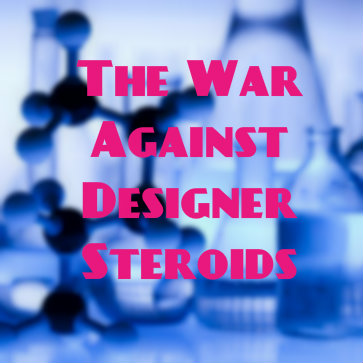 Thousands of American men and women purchase dietary supplements which claim to boost muscle. The supplements claim to be safe and, legally speaking, contain no banned ingredients. However, plenty of these sports supplements contain what are referred to as “designer steroids.”
Thousands of American men and women purchase dietary supplements which claim to boost muscle. The supplements claim to be safe and, legally speaking, contain no banned ingredients. However, plenty of these sports supplements contain what are referred to as “designer steroids.”
Designer steroids, like designer drugs, are man-made substances that mimic the effects of known drugs. These chemical compounds are not identical to a certain illegal substance, but they’re similar enough to yield many, if not all, of the same effects. The benefit to designer steroids? They are not technically illegal so they can be sold with impunity. And many consumers have no idea that what they’re taking is essentially the same as a drug the U.S. has banned.
Designer steroids fall just outside the Drug Enforcement Administration’s (DEA) list of illegal compounds. Each time the DEA adds a new steroid compound to the list designers simply tweak the recipe enough to remain beyond the reach of the law. But a new bill would include more substances and make fighting these drugs easier.
What Is The DEA Doing About It?
It’s called the Designer Anabolic Steroid Control Act. Senator Orrin Hatch of Utah and Senator Sheldon Whitehouse from Rhode Island co-sponsored the bill which aims to close the existing loophole. The Act broadens the power of the DEA by adding 27 new substances to the list of controlled anabolic steroids.
It would also empower the DEA to place newly identified designer steroids on the list on a temporary basis so that swift action could be taken. The substances could then be added permanently to the list of prosecutable substances in due course.
Improving the agility of the DEA is crucial if progress is to be made in turning this problem around. Quick action and certain prosecution are the only things that will deter profiteering from the false marketing of “safe” supplements which, in fact, contain anabolic steroids.
Who’s Helping To Fuel The War Against These Drugs?
Not surprisingly, organizations which deal with the problem of doping and steroid-loaded supplements on a regular basis are one hundred percent behind the new bill. The group which monitors Olympic athletes is just one example of many whose jobs would be made easier if designer steroids were more readily punished.
But even the supplement industry itself has spoken up in favor of the legislation. Representatives of the Council for Responsible Nutrition and the United Natural Products Alliance both publicly supported the move. The integrity of the entire supplement industry is on the line when products are being used to mask the sale of illegal steroids.
The bill will help the DEA keep pace with the makers of these substances. But even as the government strengthens the DEA’s reach in one area, problems in another area are popping up.
A crop of exercise and workout supplements are being laced with compounds quite similar to methamphetamine or amphetamines. People looking for a healthful jolt to rev up their gym time are getting the equivalent of a controlled stimulant drug. This Act does not address the designer stimulant problem. That may require another visit to Capitol Hill.
Read More About Performance Enhancing Drugs-Androgenic Steroids
30 Dec 2013
The History And Nasty Effects Of Krokodil
Would you swallow paint thinner or iodine? Would you inject yourself with lighter fluid or gasoline? Of course not. But desperate addicts living in impoverished areas of the world have turned to a drug that is made up of these kinds of toxic ingredients. The drug is known as Krokodil and it is a deadly substance.
The History Of Krokodil
Krokodil first appeared in the early 20th Century when it held a Swiss patent and was sold under the name Permonid. It is a derivative of morphine, but is 8-10 times stronger than morphine. Because of this, the drug also has a long history of non-medical use.
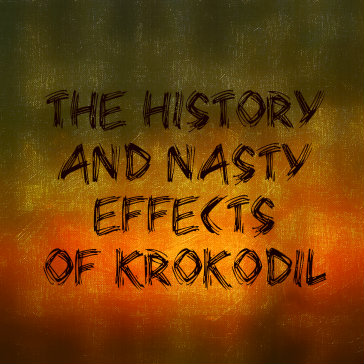 More recently, the drug resurfaced in poor areas of Russia around 2002 where it was seen as a cheap substitute for heroin. Krokodil is a concoction of codeine and any number of harsh chemicals which might be found around the house or in the garage. It has been cheap to make because until not long ago codeine was sold over-the-counter in Russia.
More recently, the drug resurfaced in poor areas of Russia around 2002 where it was seen as a cheap substitute for heroin. Krokodil is a concoction of codeine and any number of harsh chemicals which might be found around the house or in the garage. It has been cheap to make because until not long ago codeine was sold over-the-counter in Russia.
From 2002-2010 use of Krokodil spread across Russia, dragging what is guessed to be several million addicts in its wake. Exact figures on the numbers of users are hard to come by since the drug is essentially a form of suicide. Many users die within two years of starting to inject Krokodil. Why would people take such a scary drug? Because it is three times cheaper than heroin and 10 times stronger than codeine.
Krokodil did not remain in Russia. It is believed to have spread across Europe, taking hold in poor, mostly rural regions. It is now thought that Krokodil has crossed the ocean to Central or perhaps North America. There was a highly publicized report of a young girl who showed up in a hospital in Mexico City with what doctors thought to be a severe STD. Instead, it turned out that the girl had been injecting Krokodil into her genital area for a period of months.
Nasty Effects Of Krokodil On The Body
Krokodil is gruesome in that the drug destroys the user’s body from within. The drug causes blood vessels to break open and nearby tissue to die. Like the corrosive agents used to make the drug, lesions eat away a person’s flesh right down to the bone. It is called Krokodil because at the site where the person injects themselves with the drug the skin takes on a toughened, scale-like appearance. It gets a foothold among groups where heroin is too expensive. In the U.S. evidence shows a similar trend with many turning away from expensive prescription drugs in favor of far less costly street heroin.
Krokodil In The U.S.?
There have been unsubstantiated reports of Krokodil’s presence here in the United States, but so far no reports have been verified. Bringing a sample into a reputable lab is all that would be needed to determine that the drug has indeed come to America. Experts suggest that there is really no reason for Krokodil to find a home in this country.
Drug enforcement agents, addiction specialists and others say that the fact that Americans can afford less immediately lethal street drugs is reason enough to forego Krokodil. Though Krokodil, like methamphetamine, is a drug made as a home-brew, it is still hard to find, so why would drug users go looking for it? Lastly, Krokodil’s high is dependent on codeine – a substance that is far more controlled in this country than in other parts of the world.
So while the drug has definitely been traveling around the globe in recent years, it does not appear to have landed here as of yet. Still, the hopelessness that would drive a person to use such a frighteningly destructive drug is enough to warrant concern here at home and around the world.
Read More About Reported Cases Of Krokodil Use In The U.S.
25 Dec 2013
Stopping The Flow Of Dangerous Synthetic Drugs
The chemical make-up of synthetic drugs are in a continuous state of flux, means their effects aren’t predictable and correct emergency treatment can be difficult. Those in law enforcement are often handcuffed in terms of prosecution because these substances can be modified to slip through current drug laws. Now there’s a group that’s trying to tighten the net.
The National Alliance for Model State Drug Laws (NAMSDL) want to stop the proliferation of synthetic drugs, which are the second most commonly used illicit drug among young people, according to a 2012 Monitoring the Future survey. One out of every nine high school seniors reported having used synthetic drugs within the past year.
How And Why The Recipes Of Synthetic Drugs Keeps Changing
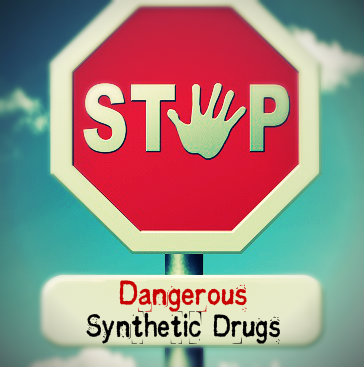 Synthetic drugs can be either man-made marijuana (cannabinoids) or chemicals related to amphetamines (cathinones). The synthetic marijuana, often sold under the names K2 or Spice, are plant materials resembling potpourri that are sprayed with chemicals that mimic THC, the psychoactive agent in marijuana. But the recipe keeps changing in order to evade prosecution.
Synthetic drugs can be either man-made marijuana (cannabinoids) or chemicals related to amphetamines (cathinones). The synthetic marijuana, often sold under the names K2 or Spice, are plant materials resembling potpourri that are sprayed with chemicals that mimic THC, the psychoactive agent in marijuana. But the recipe keeps changing in order to evade prosecution.
In 2012 the federal government made synthetic drugs, also known as novel psychoactive drugs, illegal. But the law defines the drugs narrowly. Once those who make the drugs tweak the recipe, the new compound no longer fits within the narrow definition of synthetic drugs. To further complicate the matter, the substances are often sold as bath salts, incense or plant food with a label saying they’re not intended for human consumption.
How The Spread Of Synthetic Drugs Is Trying To Be Halted
What NAMSDL wants to do is work with state lawmakers to make classes of substances illegal, rather than specific chemical combinations. The laws could give examples of what some of those substances might look like, but would leave room so that potential new chemical compounds would be illegal. That would certainly speed things up for law enforcement that now must often wait a year and a half before each new synthetic drug compound is banned.
NAMSDL also wants to enhance communication between those who see the changing drug landscape firsthand. The Drug Enforcement Agency currently collects and disseminates drug information to concerned parties, but it’s hospital emergency rooms, poison control centers and law enforcement that sees what’s going on in real time. This would help keep the information on synthetic substances truly up-to-date
Synthetic Drug Education And Prevention
NAMSDL is working directly with the Office of National Drug Control Policy and others to create an effective education and prevention campaign aimed at informing moms, dads, emergency room staff and school administrators about what these drugs are and what they do. Education, information flow and improved legislation represent a 360 degree effort on closing the gaps and halting the flow of these dangerous drugs.
Read More About Synthetic Drugs Causing More Emergency Room Visits Than Real Drugs
A new drug that has devastating consequences for its users may have finally been confirmed to have made it into the U.S. The drug is called Krokodil, and it first appeared in Russia as a cheap, homemade substitute for heroin. The name, which means crocodile in Russian, refers to the scaly sores that appear almost immediately after using this drug. The sores begin under the skin and can be so bad that the drug has been described as flesh-eating. The result is horrific and can lead to scarring, amputation, and even death.
Krokodil Beginnings In Russia
 Homemade injectable opioid drugs are nothing new in Russia. Resourceful people there have been creating and using their own drugs to get high for decades. In the 1990s, the heroin trade from Afghanistan increased and drug users did not need to make their own substitutes. Heroin addiction became a serious and widespread problem in the country.
Homemade injectable opioid drugs are nothing new in Russia. Resourceful people there have been creating and using their own drugs to get high for decades. In the 1990s, the heroin trade from Afghanistan increased and drug users did not need to make their own substitutes. Heroin addiction became a serious and widespread problem in the country.
Over the last few years, the Russian government has targeted illegal opium sales to try to solve the problem of heroin addiction. As sources of heroin dwindled and the product became more expensive, the practice of making heroin substitutes at home came back into favor. Krokodil is easily made from codeine, a prescription opioid, and other household chemicals.
Krokodil gives the user a high similar to heroin, but with even worse side effects. The green and black colored sores and ulcers begin to appear soon after the first use, and get worse as use of the drug continues. The drug, with the chemical name desmorphine, as well as the other chemicals that go into making it, tend to clump up and stay inside blood vessels all over the body. The clumps lead to infections and sores that spread and worsen.
Disputed Krokodil Cases In The U.S.
Experts in the field of illegal drugs have long feared that Krokodil would eventually show up in the U.S. Several disputed cases have been reported, including a doctor in the Chicago area who is convinced he treated two young women with the sores caused by Krokodil use. Cases in California and other states were also unconfirmed.
Reputable Case Of Krokodil Use In The U.S.
Now, it would seem that the worst fears of some have been vindicated. Two doctors working at St. Mary’s Health Center outside of St. Louis, Missouri, have published their findings from treating a victim of Krokodil use. They treated the 30-year-old man in December 2012. He had sores all over his legs. His skin was rotting away in places, and he had lost a finger on one hand to the infection. He told the doctors that he had been injecting himself with a synthetic heroin substitute that he made using codeine, gasoline, and other household chemicals. The admission, along with the sores, made a strong case that the doctors did treat a young man who had been using this scary new form of heroin.
Krokodile – Possible Future U.S. Epidemic?
If the doctors are right and Krokodil is now being used in the U.S., the implications are very serious. If drug users addicted to heroin and other opioids learn how to make this drug and can do so inexpensively, it could represent a new epidemic, much like what has been seen in Russia. The disfiguring effects of using Krokodil, as well as the addictive nature of the drug, mean that many people will suffer, and even die from using it. The Drug Enforcement Agency has yet to confirm the presence of Krokodil in the U.S., but with reports coming in from emergency rooms across the country, that confirmation does not seem to be far off.
Read More About Krokodil Claiming U.S. Victims
17 Oct 2013
You May Think It’s Molly, But It May Not Be
Hospitals face a difficult problem whenever someone comes in to be treated for a Molly overdose. The patient may believe they’ve taken a form of ecstasy, but there is no way to know what the person actually swallowed. There is no “Truth in Labeling Law” to govern illegal drugs, and many think they’ve been using Molly when they’ve really been taking some other highly dangerous substance.
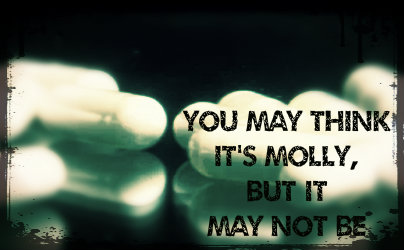
Courtesy of: www.ktsm.com
Molly is the street name for the synthetic drug MDMA. It’s called Molly because of the powder or capsule form that it comes in, as opposed to tabs, and the presumption that the “molecular,” or Molly for short, form is more pure. Synthetic drugs are also sometimes referred to as designer drugs. They are often compounds designed to mimic the effects of traditional drugs like marijuana, LSD or ecstasy, among others. Synthetic marijuana, for example, is sold as K2 or Spice.
Mislabeled And Dangerous Synthetic Designer Drugs
The problem is that you don’t know the person who designed your Molly. The Drug Enforcement Agency regularly tests the drugs it obtains through seizures. Those tests often reveal that pills are mislabeled.
Experts often find methylone in the pills, which is a key component in bath salts, another synthetic drug famous for being unpredictable and causing serious health side effects. In 2012 a man was arrested for importing methylone from China and then selling it to someone as Molly. That person died after using the drug.
Dangerous Side-Effects Of Molly
Molly is a popular drug for young people attending raves, dance clubs and concerts. The drug enhances positive emotions and feelings of bonding with others. However, Molly also increases a person’s heart rate and raises their body temperature, sometimes to extremes. One young man died with a body temperature of 109 after taking Molly. The risks of dehydration are so well known that special booths are often set up at events where Molly is expected to be used.
Symptoms commonly seen in hospitals include agitation, seizures, soaring fever and increased heartbeat. Since there is no way to know for certain what the young person actually ingested, the best hospital staff can do is to manage symptoms while they wait for the effects of the drug to wear off. Hardly reassuring.
Dying After Taking Molly
Over Labor Day weekend 2013 several young people died after taking Molly at various concert venues, with one multi-day concert in New York was shut down due to deaths. Nevertheless, rappers and rock stars continue to sing about the beauties of Molly. And young people continue to swallow whatever they are being told by their idols.
To Read More About Molly’s Dangerous Side-effects On Teens – Click Here
24 Sep 2013
Do Teens Know the Truth About Molly?
Who is Molly? Molly is the new name for the decades-old drug ecstasy, the drug that was responsible for three deaths and four people being hospitalized in critical condition over this past Labor Day weekend.
Description Of Molly
Molly is a synthetic, or man-made, drug. It first showed up on the streets in the 1980s as ecstasy. At the time it was called a club drug because young people enjoyed taking it when they went dancing, attended concerts or large parties. Today it’s sold in powder form, usually in capsule form but also sold as pills or tablets, with “Molly” connoting molecular purity.
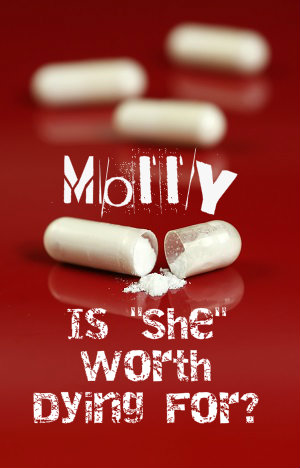 The pills are brightly colored and sometimes emblazoned with cartoonish images. Officially the drug is known as MDMA, which stands for 3,4-Methylenedioxymethamphetamine. If you saw a few words in there you thought you recognized like amphetamine and meth you were right. The drug is a stimulant, or amphetamine, resembling methamphetamine in the way it increases heart rate and stimulation while providing feelings of euphoria.
The pills are brightly colored and sometimes emblazoned with cartoonish images. Officially the drug is known as MDMA, which stands for 3,4-Methylenedioxymethamphetamine. If you saw a few words in there you thought you recognized like amphetamine and meth you were right. The drug is a stimulant, or amphetamine, resembling methamphetamine in the way it increases heart rate and stimulation while providing feelings of euphoria.
MDMA is a concoction combining a stimulant with an empathy-boosting chemical plus a psychedelic. Kids like to take Molly at large group events because the drug makes them feel more energized, less inhibited and closer to those around them. There’s also a sensation of heightened alertness.
Molly’s Risks
There’s also a down-side as it can lead to blurry vision, racing blood pressure and heartbeat and muscle cramps. Sometimes the person’s insides are so revved up that they develop hyperthermia. Long hours of dancing and pressing up against people in a crowd make heat stroke likely. Increased heart rate can easily become an arrhythmia or erratic heartbeat, and seizures have also been known to occur.
MDMA may ratchet up energy and perception but it often pulls down the user’s emotions, leaving them feeling depressed, sad and anxious. Problems with memory can result and these difficulties sometimes last up to a week or more. When a young person decides to mix MDMA with alcohol they increase the sedative effects as well as increasing their risk of becoming dehydrated.
The risk of dehydration with use of MDMA is real, so lots of users try to compensate by drinking more water. However, since it causes the body to retain fluids, the combination of MDMA and water can quickly create an imbalance of electrolytes. Kids who choose to combine Molly with caffeine increase their risk of dehydration while also dangerously increasing body temperature.
Impure MDMA
Called Molly because of supposed molecular purity, the drug is no more pure than any other illicit drug. In fact, MDMA is often cut or completely replaced with another substance known as PMA which produces similar effects. Some deaths attributed to MDMA have actually been caused by PMA. More than that, street drugs are made with no regulating oversight, meaning every batch is unique and users can’t expect one tablet to affect them precisely the same as the last. Many high profile deaths come about because a celebrity is using street drugs in a new city and expecting them to be exactly like those they used in another city — it just doesn’t happen that way.
Celebrity Push Of Molly
Ecstasy, MDMA, Molly — whatever you call it, the drug is enjoying renewed popularity spurred on by pop singers like Madonna, Kanye West and Miley Cyrus. The Monitoring the Future studies conducted by the National Institute on Drug Addiction report that MDMA is experiencing a resurgence among 20-somethings and even high schoolers.
Strong Opportunity For Parents And Teachers
The recent tragic deaths at the Electronic Music Festival in New York provide an opportunity for parents and teachers to talk with teens about the realities of using drugs like MDMA. No matter what pop singers or friends might say, no experience is worth dying for.


